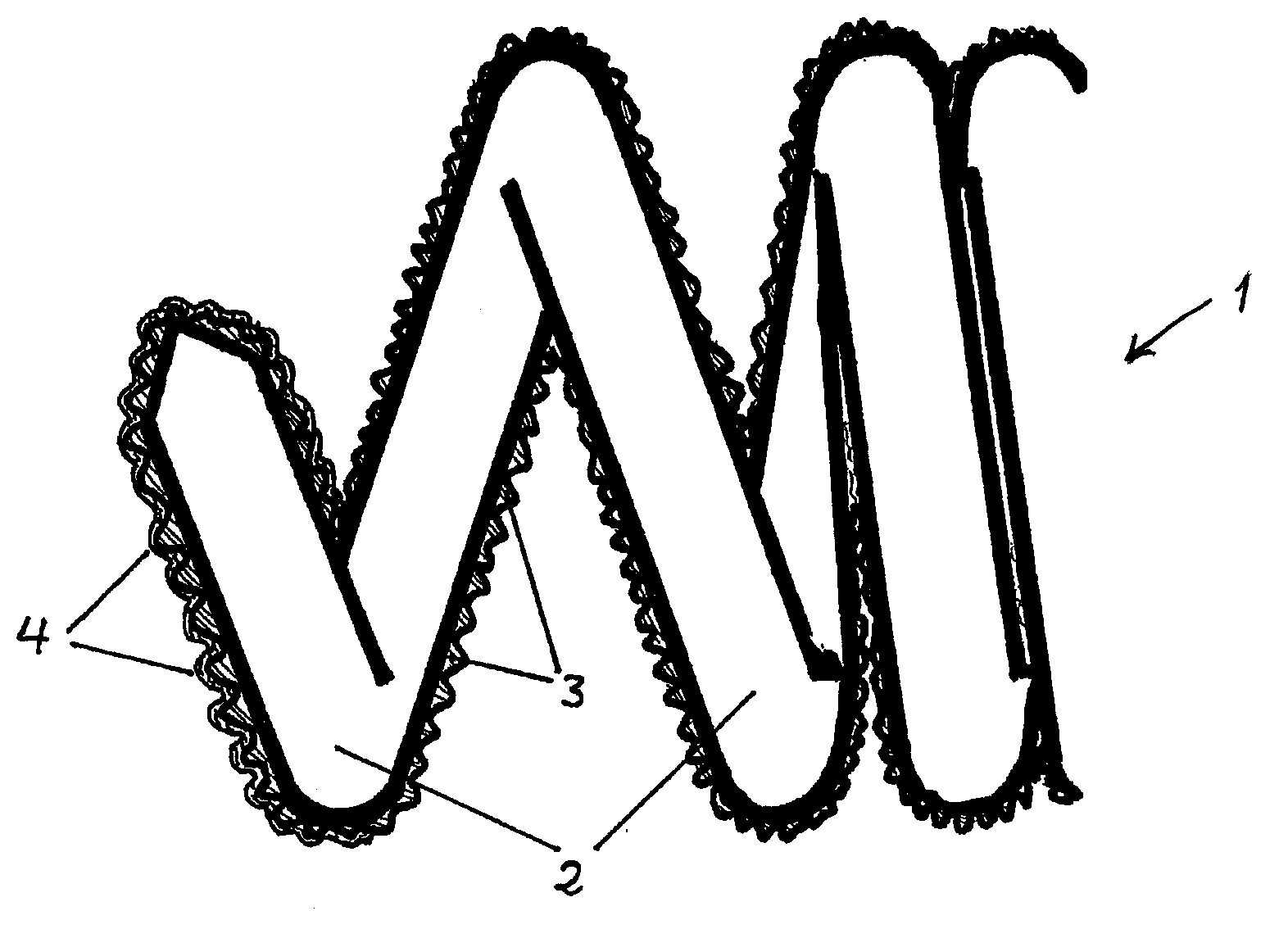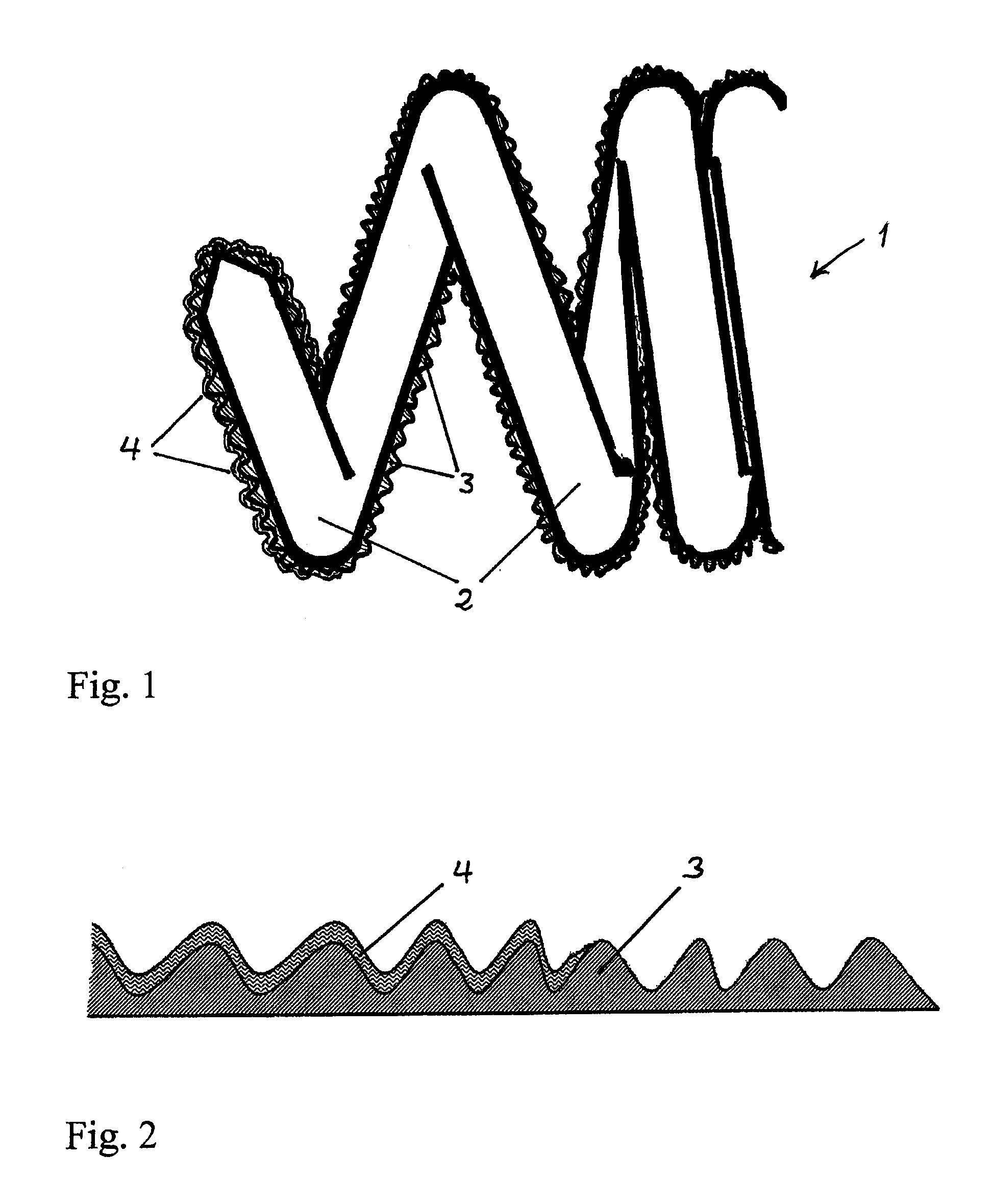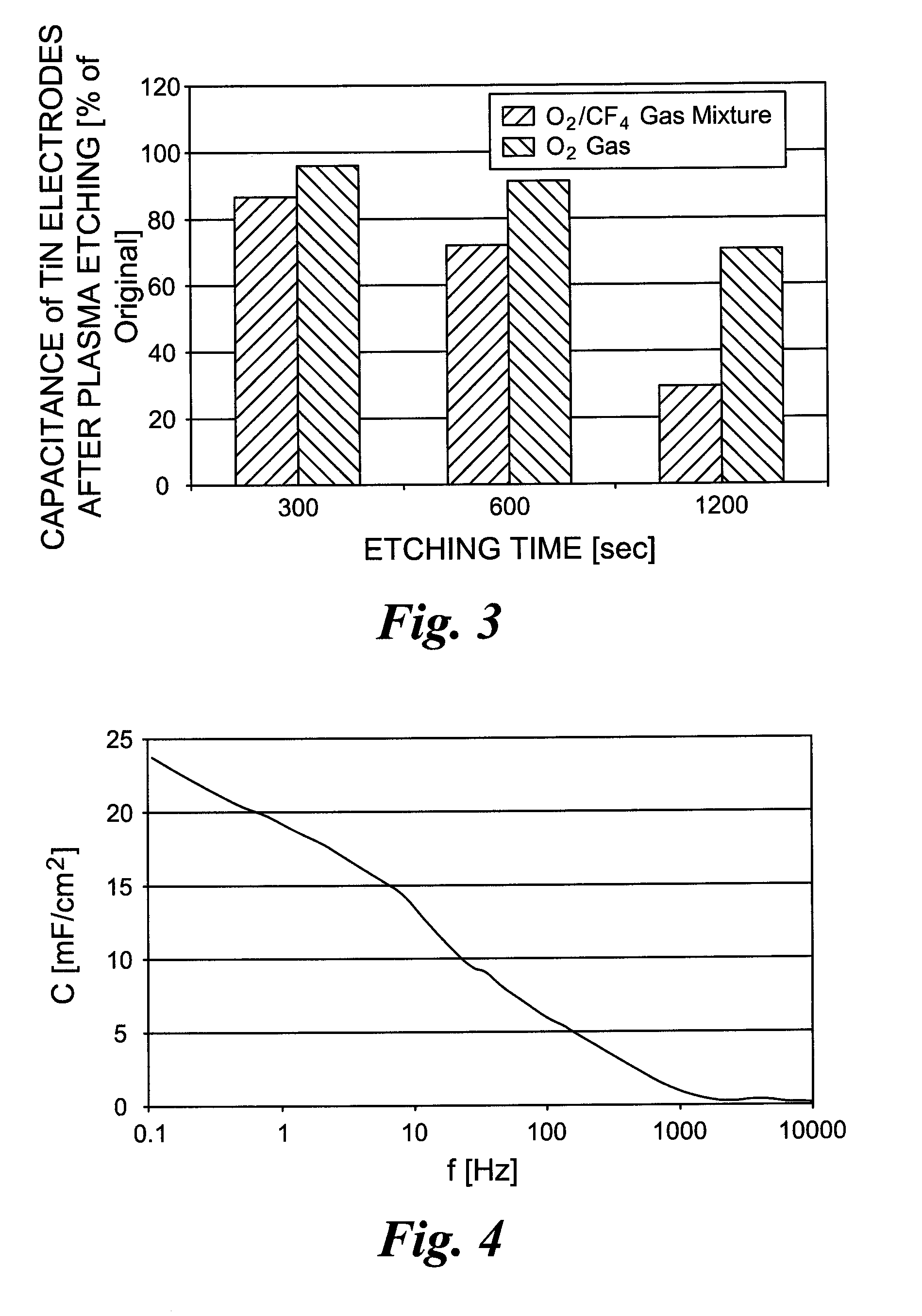Selective parylene coating for cardiac pacemaker electrodes
a pacemaker electrode and parylene coating technology, applied in the field of stimulation electrodes, can solve the problems of damage to the porous layer located underneath, undone high capacity achieved with difficulty through the porous layer, etc., and achieve the effect of avoiding bleeding of the coating and affecting the capacitan
- Summary
- Abstract
- Description
- Claims
- Application Information
AI Technical Summary
Benefits of technology
Problems solved by technology
Method used
Image
Examples
Embodiment Construction
[0024]For producing a stimulation electrode 1 according to FIG. 1, a porous coating 3 made from a biocompatible material according to U.S. Pat. No. 6,501,994 is deposited on an electrically conductive base body 2, especially a helix made from Pt or Pd. Here, the porous film 3 is coated completely and uniformly with a parylene film 4. For this purpose, an in-situ method is applied in which the parylene is deposited very uniformly on the porous film 3 due to in-situ polymerization.
[0025]The porous film 3 has a film thickness of 1-15 μm, especially 2-10 μm, and pores of, in particular, 3-8 μm, on which the parylene is deposited in a film thickness of 5-10 μm. The full-surface parylene coating 4 is masked between two half shells and is removed, where it is not masked, in a selective plasma process. For this purpose, the plasma process is set to the exact film thickness of the parylene film, in order to preserve the porous film, especially made from TiN.
[0026]The stimulation electrode pr...
PUM
 Login to View More
Login to View More Abstract
Description
Claims
Application Information
 Login to View More
Login to View More - R&D
- Intellectual Property
- Life Sciences
- Materials
- Tech Scout
- Unparalleled Data Quality
- Higher Quality Content
- 60% Fewer Hallucinations
Browse by: Latest US Patents, China's latest patents, Technical Efficacy Thesaurus, Application Domain, Technology Topic, Popular Technical Reports.
© 2025 PatSnap. All rights reserved.Legal|Privacy policy|Modern Slavery Act Transparency Statement|Sitemap|About US| Contact US: help@patsnap.com



